Pricing is a critical aspect of any business strategy. Understanding your customers’ purchase decisions can make or break your business. But how do you determine the acceptable price range for your products or services? One of the most effective methods is through conducting pricing surveys.
In this guide, we will take a detailed look at pricing surveys. We will explore their purpose, benefits, types, and the best ways to conduct them. Whether you’re a small business owner or a market researcher, this article will provide the insights you need to optimize your pricing strategy.
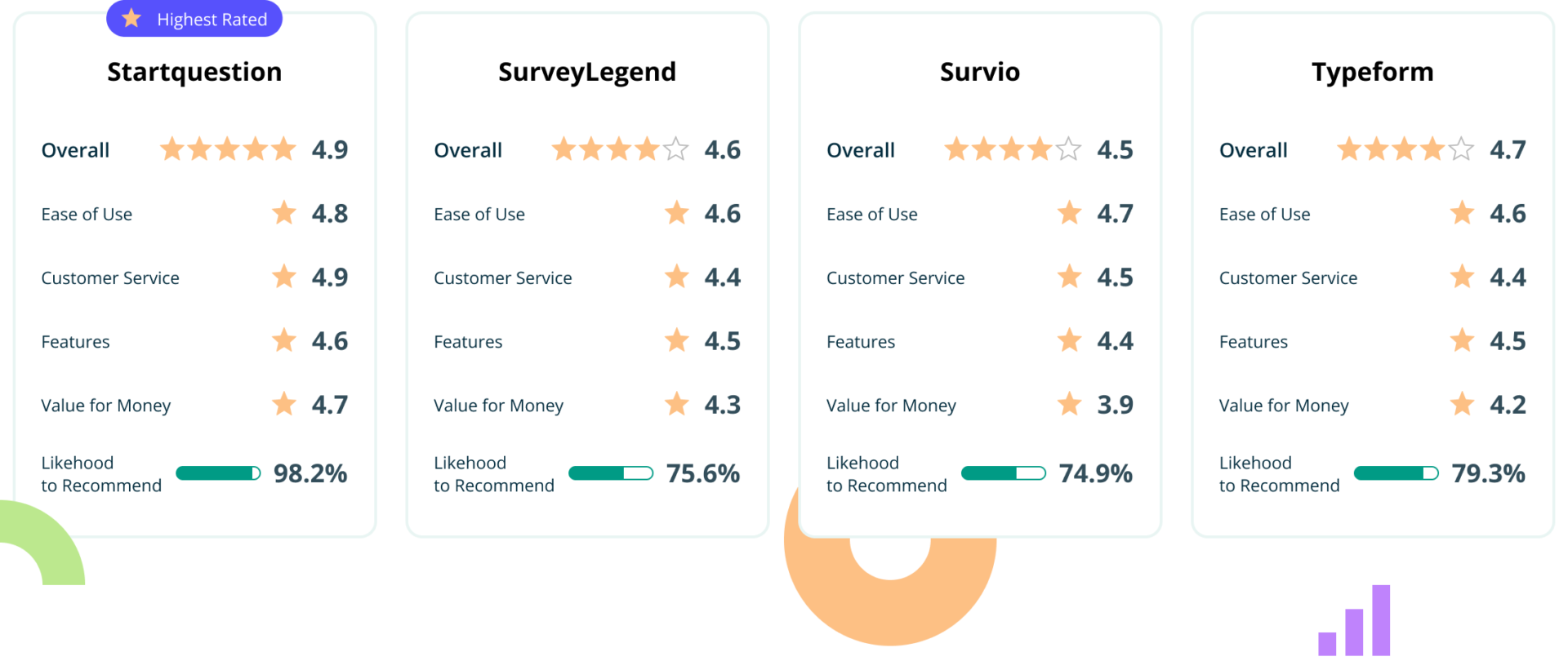
Purpose of Pricing Surveys
If we were to prepare the shortest definition, a pricing survey is used to price products or services. This type of research, when done well, translates into the company’s revenues and profits.
Approaching the topic in more detail, we must say that searching for the answer to the question of how to price an item to sell can achieve the following purposes, important from the organization’s point of view.
Better Understanding of Target Customers
Understanding customers’ perceptions of your product or service value is crucial to setting the optimal price. Price surveys can help assess customer sentiment, preferences, and expectations. The perceived value of your fees can significantly impact purchasing decisions.
Market Research & Competitor Analysis
Pricing is not standalone; it relates to your competitors’ offerings. Surveys help you benchmark your prices against similar products or services to make strategic pricing adjustments for a competitive edge.
Price Sensitivity Analysis
Understanding your customer’s willingness to pay is crucial. Pricing research can help you gauge price sensitivity and measure the impact of different price points on consumer behavior. Use this information to optimize your pricing strategy and boost sales and profitability.
Product Development Purposes
Pricing surveys inform product development. Gather feedback on customer preferences, including optimal price point, to tailor offerings to market demands.
Survey Questions About Product Pricing
Effective pricing strategies are crucial for your company’s success, profitability, and customer satisfaction. Don’t leave it to chance – use surveys to gain valuable insights and achieve the best possible pricing approach.
Survey Questions About Product Pricing
Effective pricing strategies are crucial for your company’s success, profitability, and customer satisfaction. Don’t leave it to chance – use surveys to gain valuable insights and achieve the best possible pricing approach.
What are the Benefits of Pricing Surveys?
When translating the pricing survey objectives into tangible benefits for your organization, we can mention the following:
- Informed Pricing Decisions
Pricing studies provide data-driven insights that help make informed pricing decisions based on customer feedback and preferences.
- Competitive Advantage
Adjust your various price points effectively by comparing them with your competitors. Identify opportunities to position your products or services as more attractive and stay ahead in the game.
- Customer Satisfaction
Aligning your pricing model with target market expectations can boost loyalty. Customers who feel they’re getting value for money are likely to stick with your brand. Surveys help you refine pricing to meet expectations and improve adherence.
- Improved Profit Margins
Surveys help you find the pricing strategies to maximize profitability. Adjusting prices to reduce costs or increase quality can improve profit margins.
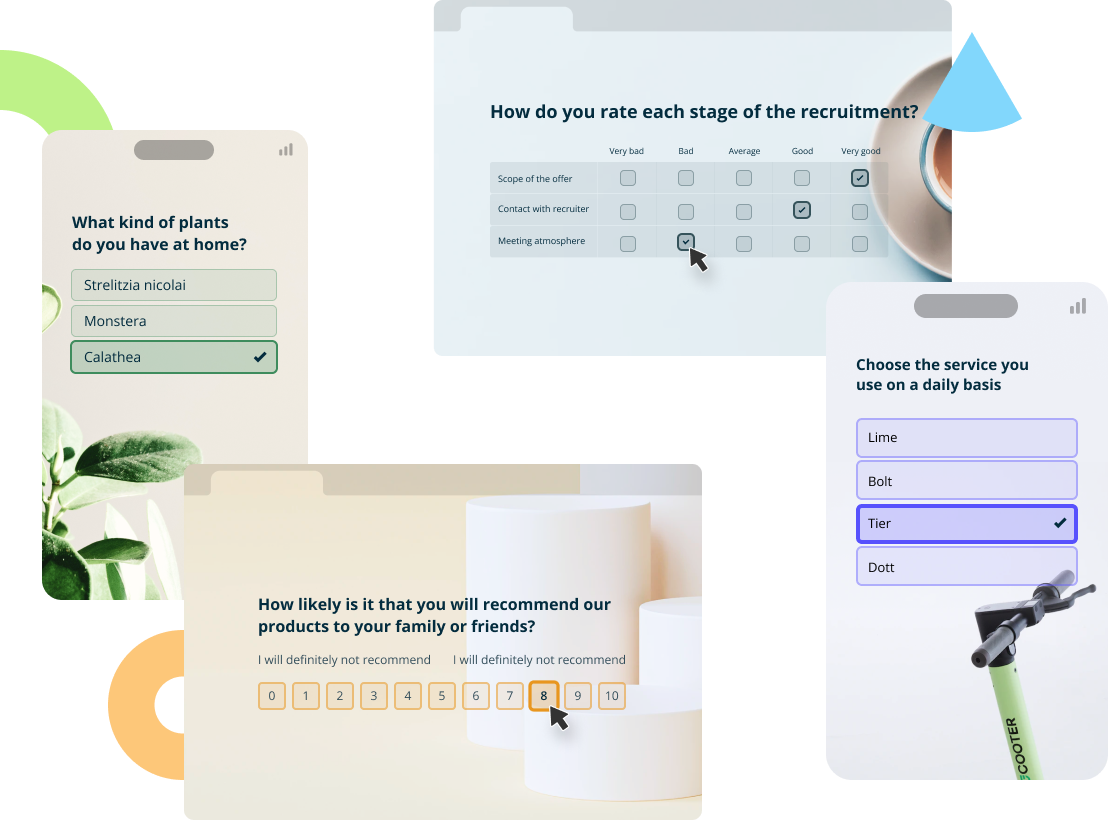
Types of Pricing Surveys
How much customers are willing to pay? Exactly how much value does my product or service bring to the table? Pricing survey questions aim to find answers to these and other similar questions.
How do we go about this task? First, it is worth choosing a price survey methodology. There are various research approaches, each tailored to specific research needs. These include:
Willingness to Pay Survey
This survey determines customers’ spending limits on a product or service. It shows what value customers associate with your offering when launching new products. Respondents indicate the highest amount they would pay for the product, giving insights into price sensitivity. This approach helps make better pricing decisions that increase revenue and customer satisfaction.
Sample Question:
“At what price point would you consider our premium coffee subscription a good value for the quality and convenience it offers? Please choose from the following options: $15/month, $20/month, $25/month, $30/month, $35/month.”
Van Westendorp Price Sensitivity Meter
The Van Westendorp pricing model effectively determines the price points at which customers perceive your product as either too cheap or too expensive. This survey-based approach aids in identifying the ideal price range where your product is viewed as providing the most value. It is a reliable way to find the optimum price for your product.
Sample Question:
“At what price do you believe our gourmet chocolate box is an absolute bargain? Please enter your ‘Too Cheap’ threshold below.”
Gabor-Granger Pricing Survey
It is a simple and effective method for assessing price sensitivity and demand for your product. Respondents are presented with different price points and asked whether they would purchase the product at each price.
The survey focuses on a binary choice: buy or not at a given price. By analyzing the responses, you can identify the price with the most robust demand and pinpoint the price that maximizes sales and profitability. The survey is quick to administer and provides valuable insights into price elasticity.
Sample Question:
“Would you purchase our e-book on digital marketing at a price of $19.99? Please respond with ‘Yes’ or ‘No.’ If not, please specify the maximum price you’d be willing to pay for it.”
Conjoint Analysis
Conjoint analysis is a sophisticated research method that presents respondents with various product configurations and pricing options. With this technique, you can gain valuable insights into customer preferences and trade-offs when considering multiple product features and pricing points. It is advantageous when making nuanced pricing decisions for products with various attributes.
Sample Question:
“Imagine you’re in the market for a new laptop. We offer two options: Option A with a 15-inch screen and 8GB RAM priced at $899 and Option B with a 13-inch screen and 16GB RAM priced at $999. Which option are you more likely to purchase?”
Monadic Pricing Test
A monadic pricing test involves presenting a single price point to respondents for evaluation. This type of survey is proper when you want to gather insights into how customers react to a specific price. It offers a simple way to determine whether a price point suits your target audience.
Sample Question:
“How likely are you to purchase our newly launched smartphone at a price of $599? Please rate your likelihood on a scale from 1 (very unlikely) to 5 (very likely).”
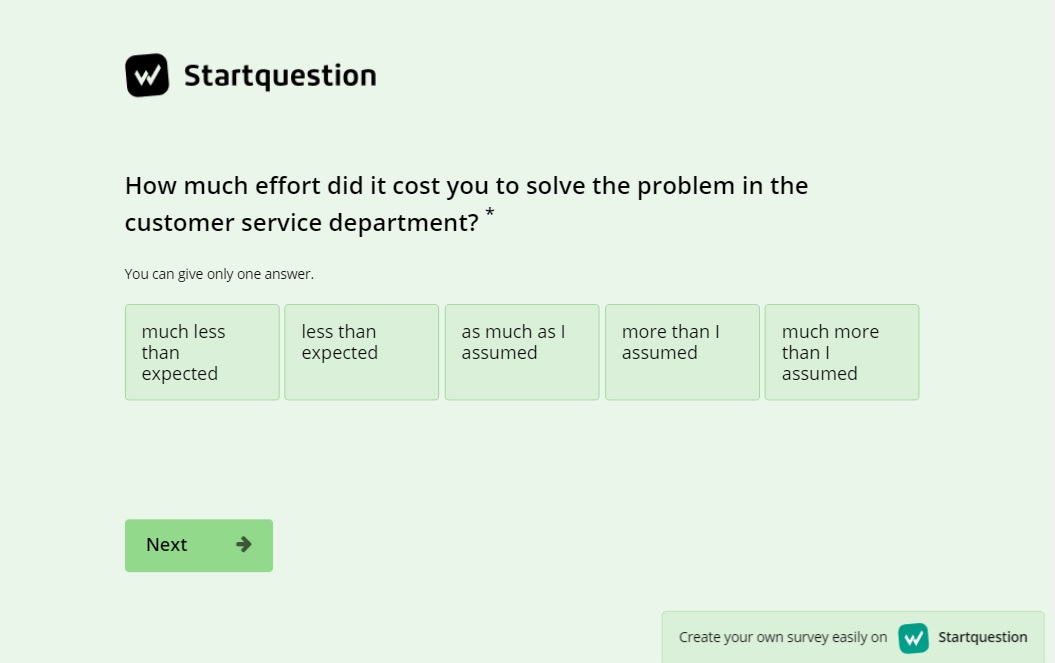
How Do You Ask about Pricing in a Survey?
To get practical pricing insights in your survey, follow these tips. They’ll help you understand your audience’s buying habits and preferences. Use them to get ahead in today’s market.
- Use Open-Ended Questions
Encouraging respondents to explain their thoughts on pricing is effective. For example, ask, “What are your thoughts on the current product pricing? Please provide comments and suggestions.”
- Pricing Sensitivity Questions
To gauge customer interest at different price rating scales, ask, “How likely are you to purchase our product at these prices: [list prices]? Please rate from 1 (very unlikely) to 5 (very likely).”
- Comparative Pricing Questions
Include questions asking respondents to compare your prices with your competitors. For instance, “Compared to our competitors, do you think our prices are: [Much Lower / Slightly Lower / About the Same / Slightly Higher / Much Higher]?”
- Likert Scale Questions
Create a Likert scale to measure satisfaction with pricing. This scale can range from “Very Dissatisfied” to “Very Satisfied.” For example, “On a scale of 1 to 5, how satisfied are you with our product’s pricing, with 1 being very dissatisfied and 5 being very satisfied?”
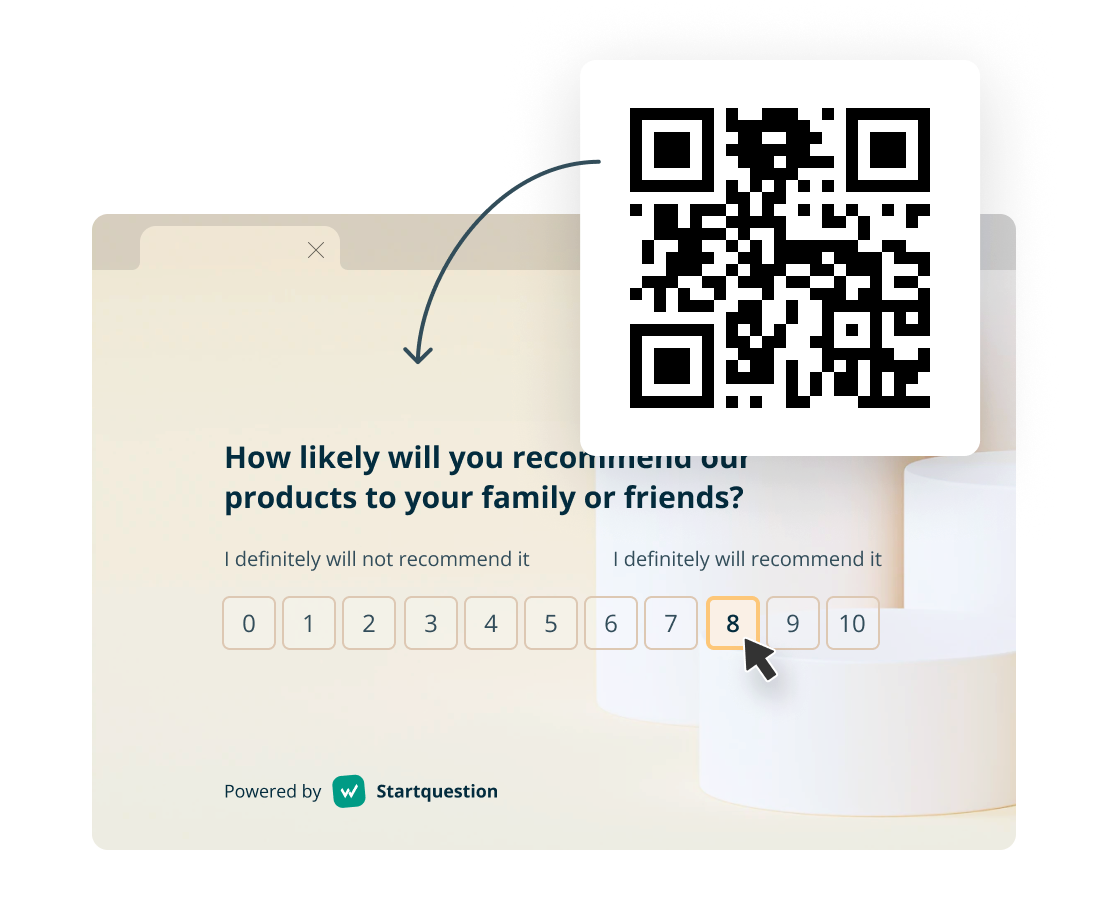
Best Ways to Share Your Pricing Survey
Getting your pricing survey in front of your target audience is super important! You want to ensure you’re reaching the right people for the best results. Here are some helpful tips to make sure your pricing survey gets distributed effectively:
QR Code
By incorporating QR codes on your product packaging, promotional materials, and marketing collateral, you provide customers with a seamless way to share their feedback.
With just a quick scan using their smartphone, they can easily access the online survey and provide valuable insights while their experience with your product or service is still fresh in their minds. This approach makes it convenient for your customers and helps you continuously improve your offerings and exceed customer expectations.
Survey Email Invitations
How to ask for pricing in email? Send targeted email invitations to your customers, subscribers, or potential respondents. Include a personalized message explaining the purpose of the survey and its importance. Provide a clear call to action with a link to the study. Email invitations can be highly effective in reaching your existing audience.
Pop-up Widget
Implementing a pop-up widget on your website is a discreet way to invite visitors to participate in your survey. A small window or banner can appear when users visit your website, asking them to take the survey. Pop-up widgets can be configured to display after a particular time or when specific conditions are met, ensuring they reach your target audience. At the same time, they are actively engaged with your content.
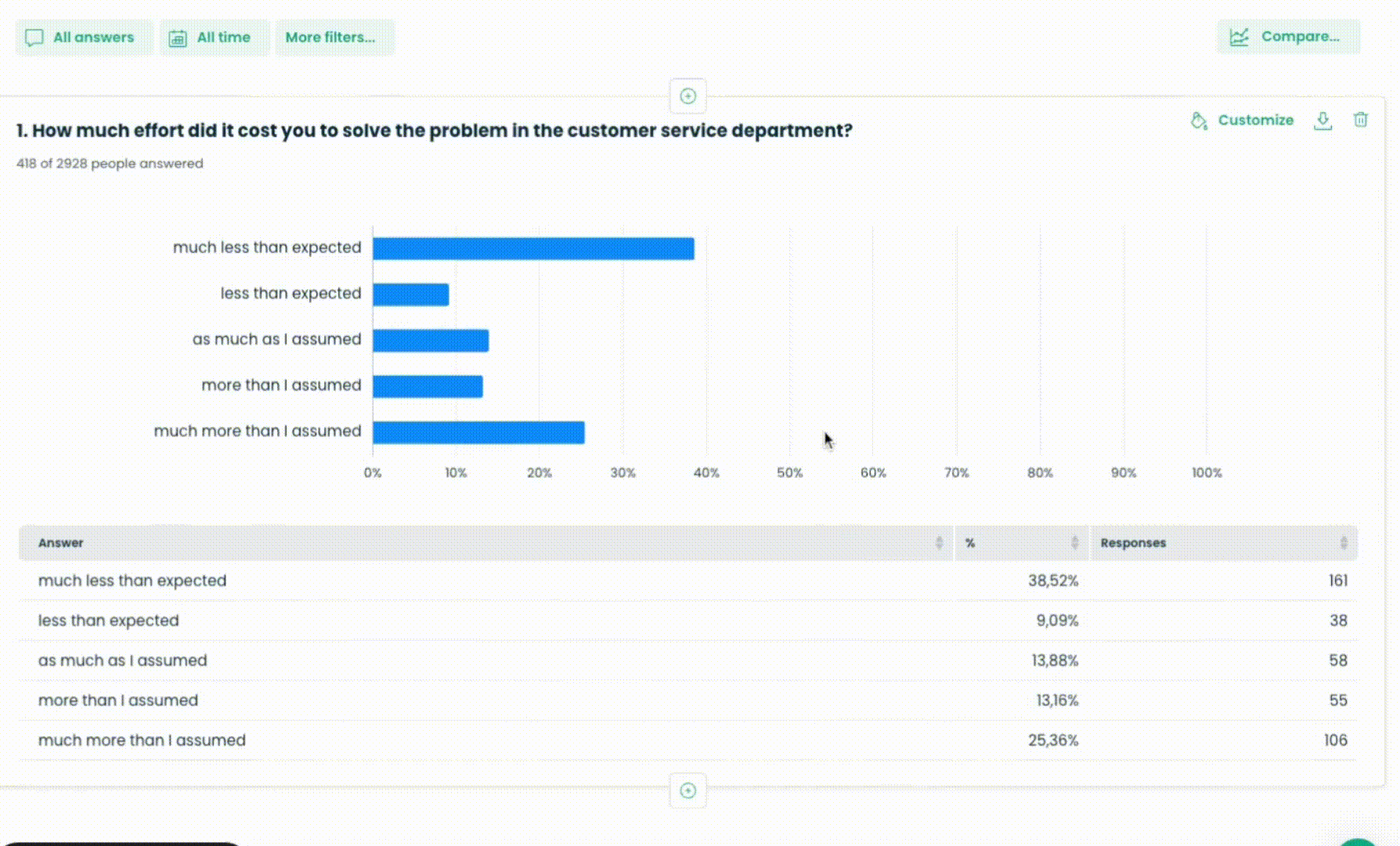
Tool to Ask Survey Questions About Price
Pricing surveys are invaluable tools for businesses seeking to optimize their pricing strategies. By understanding their purpose, benefits, types, and best practices for distribution, you can collect the data needed to make informed decisions. Whether you’re fine-tuning your current pricing strategy for launching a new product, pricing surveys are your ticket to competitive advantage and satisfied customers.
Remember to stay agile and adaptable as you embark on your pricing survey journey. Your market is constantly changing, and your pricing strategy should reflect this. Regularly conduct pricing surveys to stay attuned to customer sentiment and market trends. Your commitment to customer-centered pricing will lead you to sustainable success.
And the best part?
You don’t need advanced pricing analysis tools to gather impactful feedback.




